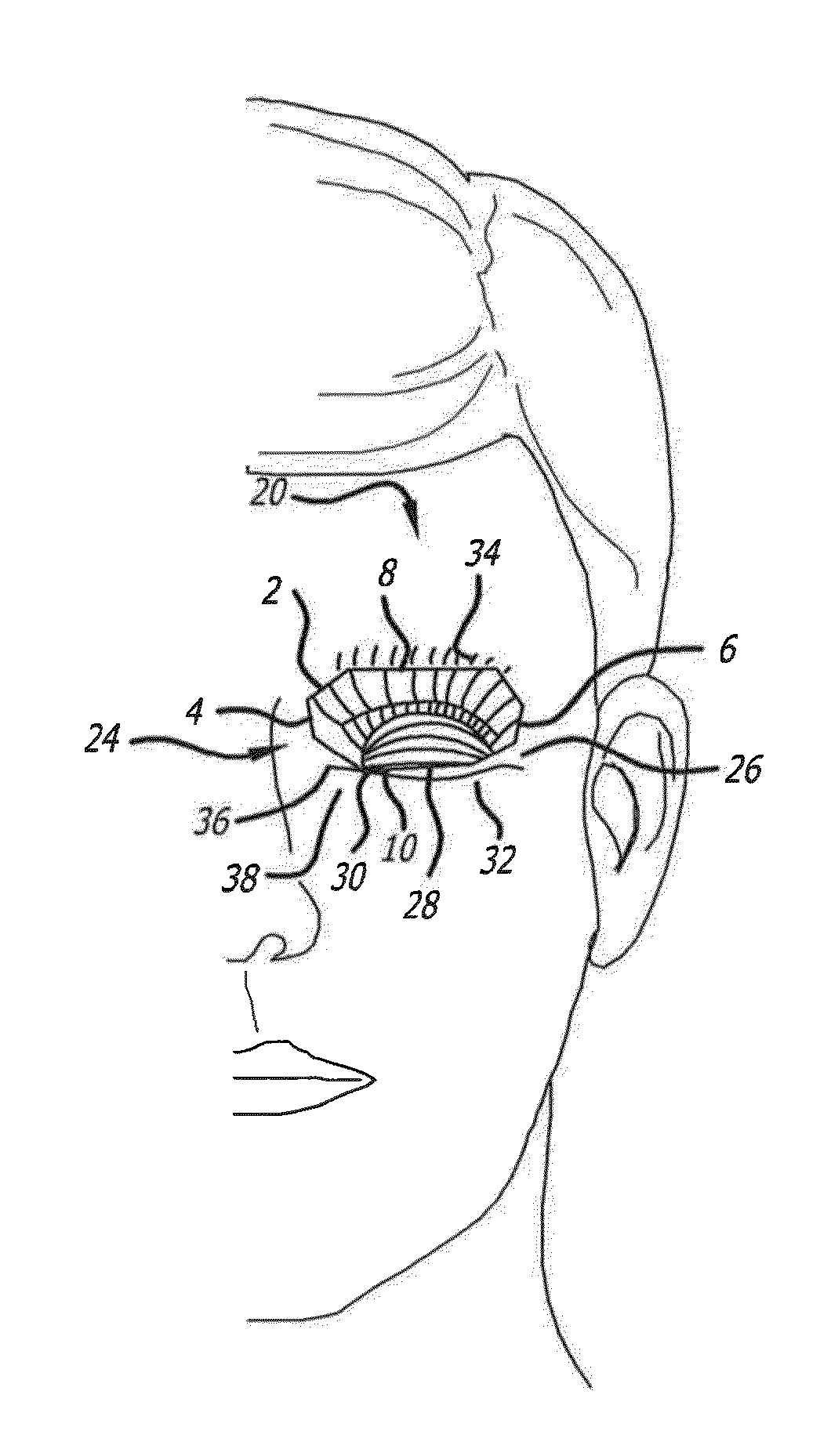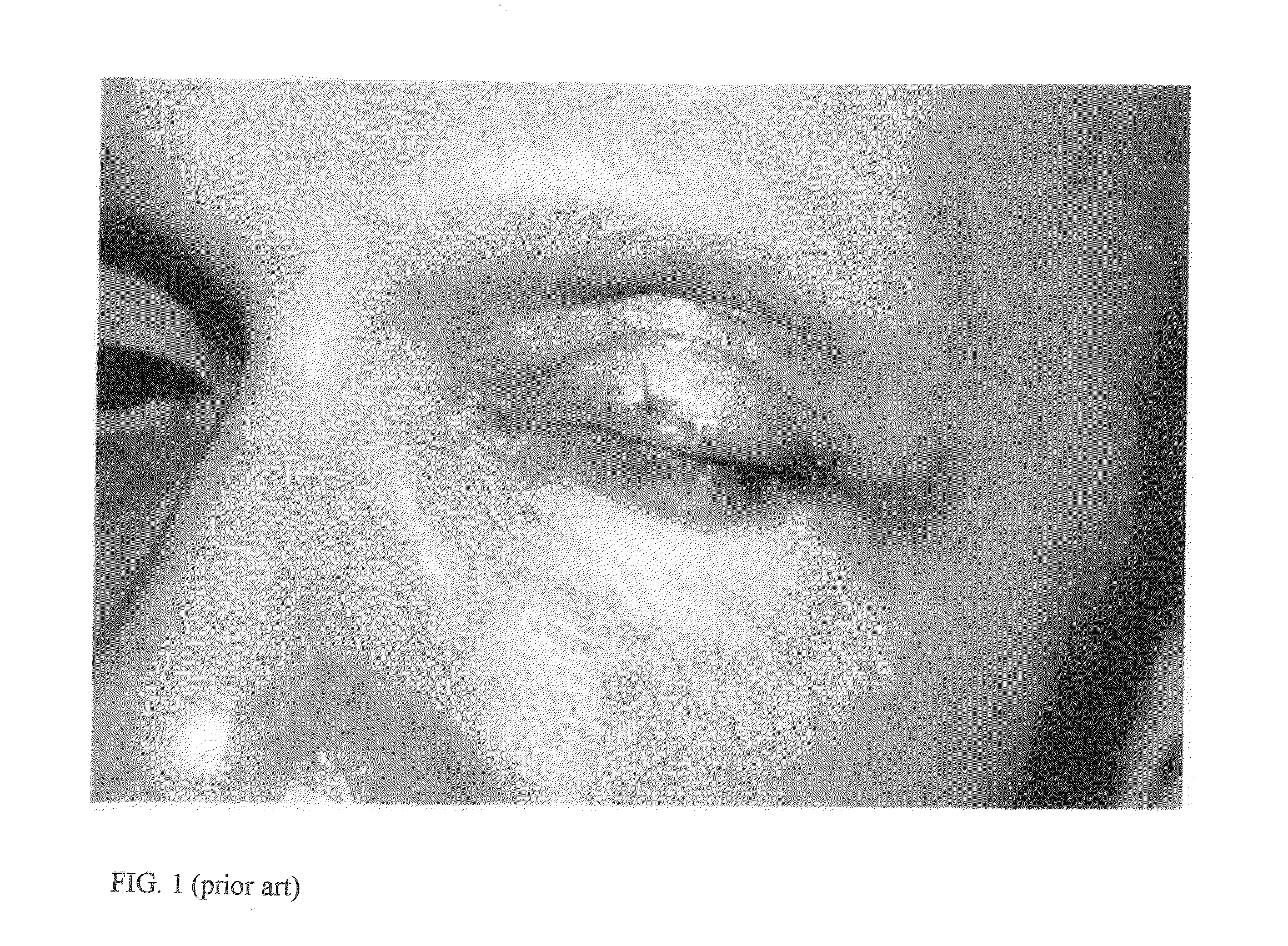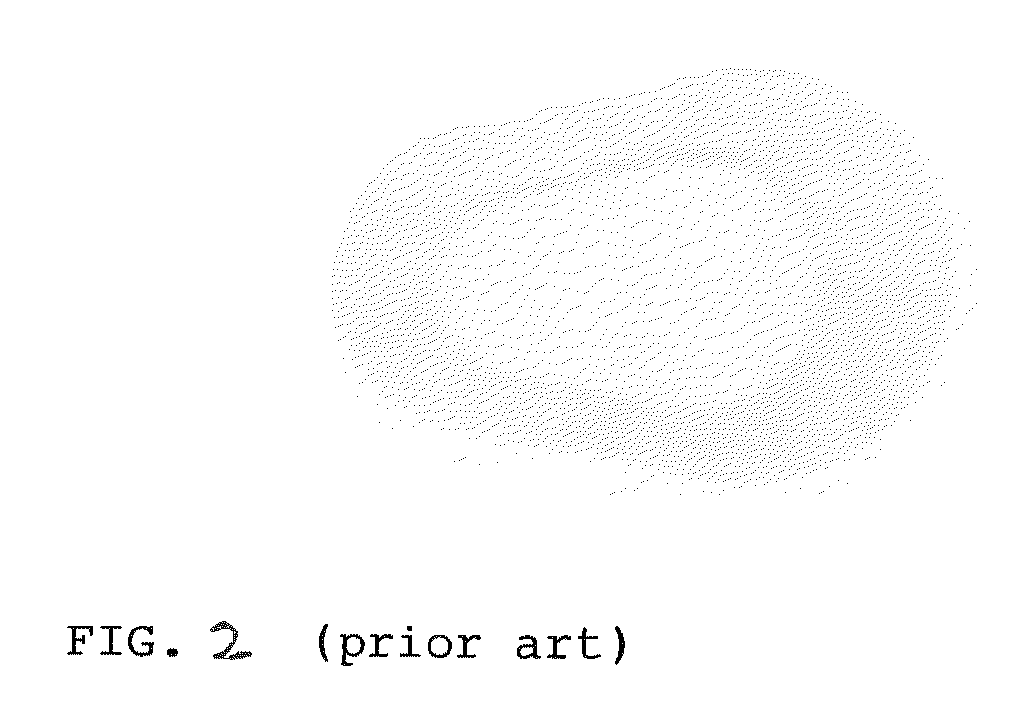Tarsus Eyelid Patch
a technology of eyelids and tarsus, which is applied in the field of eyelid patch, can solve the problems of ineffective eye closure, uncomfortable user wearing rigid eye splints, and inconvenient use of eyelid patches
- Summary
- Abstract
- Description
- Claims
- Application Information
AI Technical Summary
Benefits of technology
Problems solved by technology
Method used
Image
Examples
Embodiment Construction
[0027]The Tarsus Eyelid Patch heals defects on an eye's surface, as a painless option to Tarsorrhaphy, a standard surgical procedure of sewing the eyelids closed, illustrated in FIG. 1 (prior art), by painlessly and comfortably holding the upper eyelid or superior tarsus down, and holding the eye closed.
[0028]In the anatomy of the eye, the flat of the eyelid is called the tarsus. The eyelids protect and help lubricate the eyes. The eyelid skin itself is very thin, containing no subcutaneous fat, and is supported by a tarsal plate. This tarsal plate is a fibrous layer that gives the lids shape, strength, and a place for muscles to attach.
[0029]The tarsi or tarsal plates are two comparatively thick, elongated plates of dense connective tissue, about 2.5 cm (1.0 in) in length, one is found in each eyelid and contributes to its form and support. They directly abut the lid margins. The tarsus has a lower and upper part making up the palpebrae. The superior tarsus, tarsus superior or supe...
PUM
 Login to View More
Login to View More Abstract
Description
Claims
Application Information
 Login to View More
Login to View More - R&D Engineer
- R&D Manager
- IP Professional
- Industry Leading Data Capabilities
- Powerful AI technology
- Patent DNA Extraction
Browse by: Latest US Patents, China's latest patents, Technical Efficacy Thesaurus, Application Domain, Technology Topic, Popular Technical Reports.
© 2024 PatSnap. All rights reserved.Legal|Privacy policy|Modern Slavery Act Transparency Statement|Sitemap|About US| Contact US: help@patsnap.com










